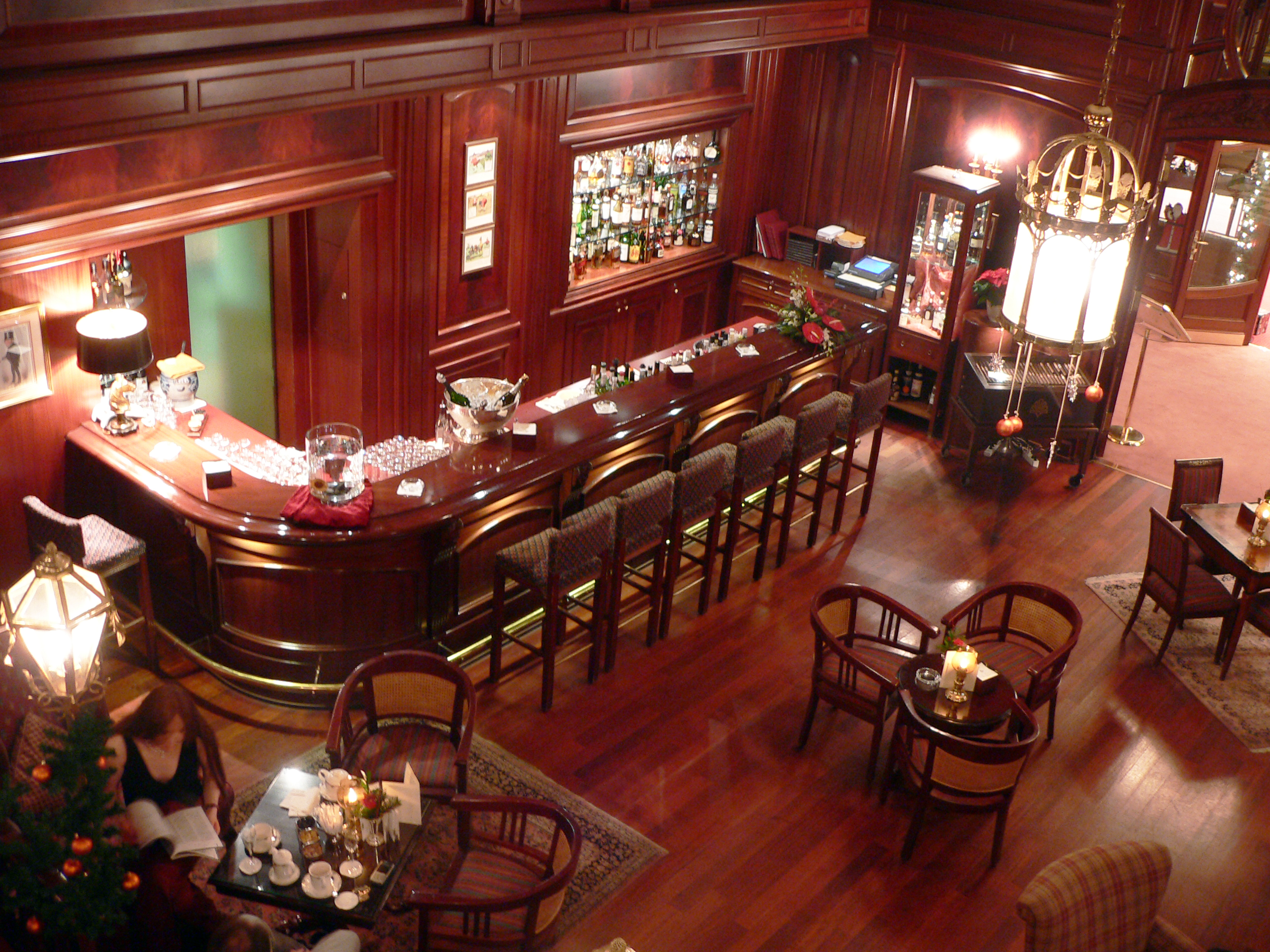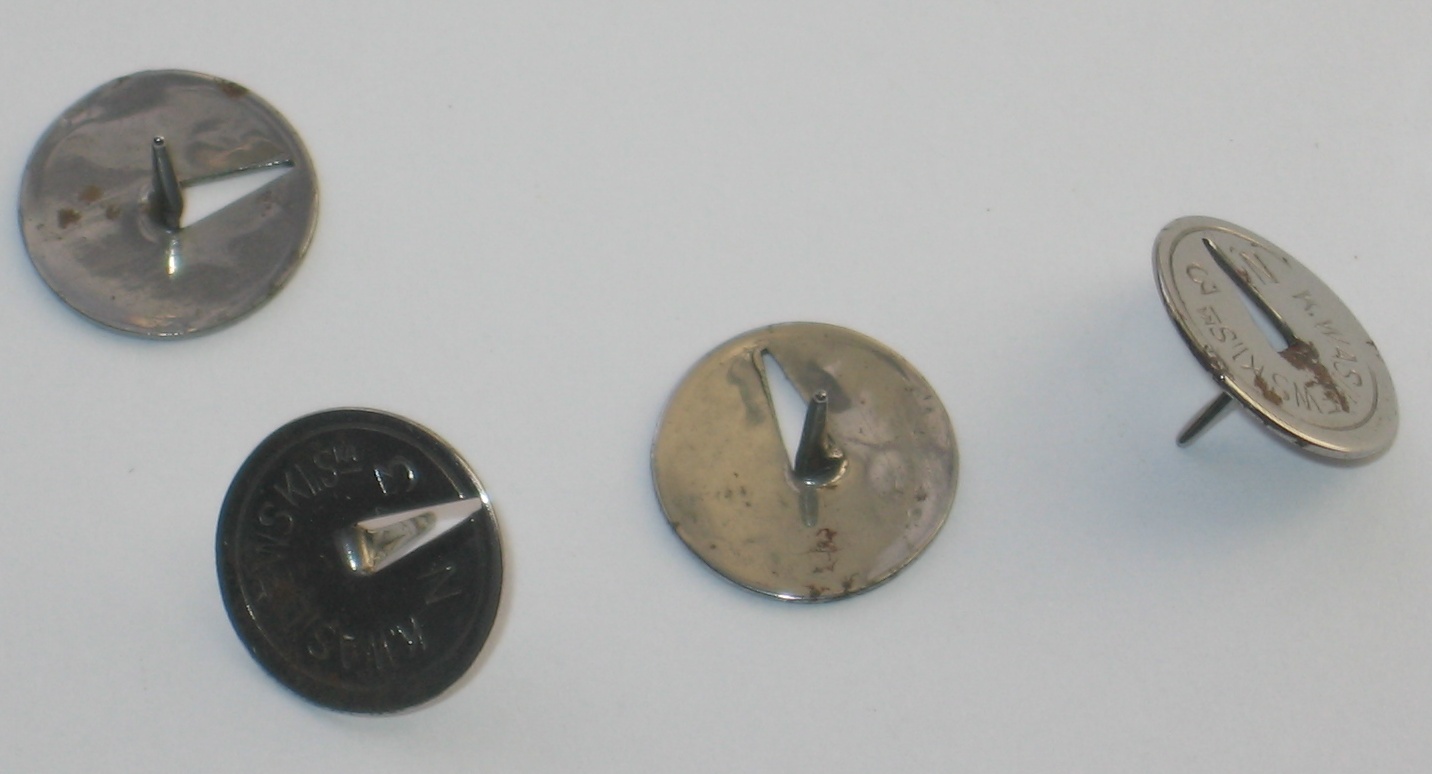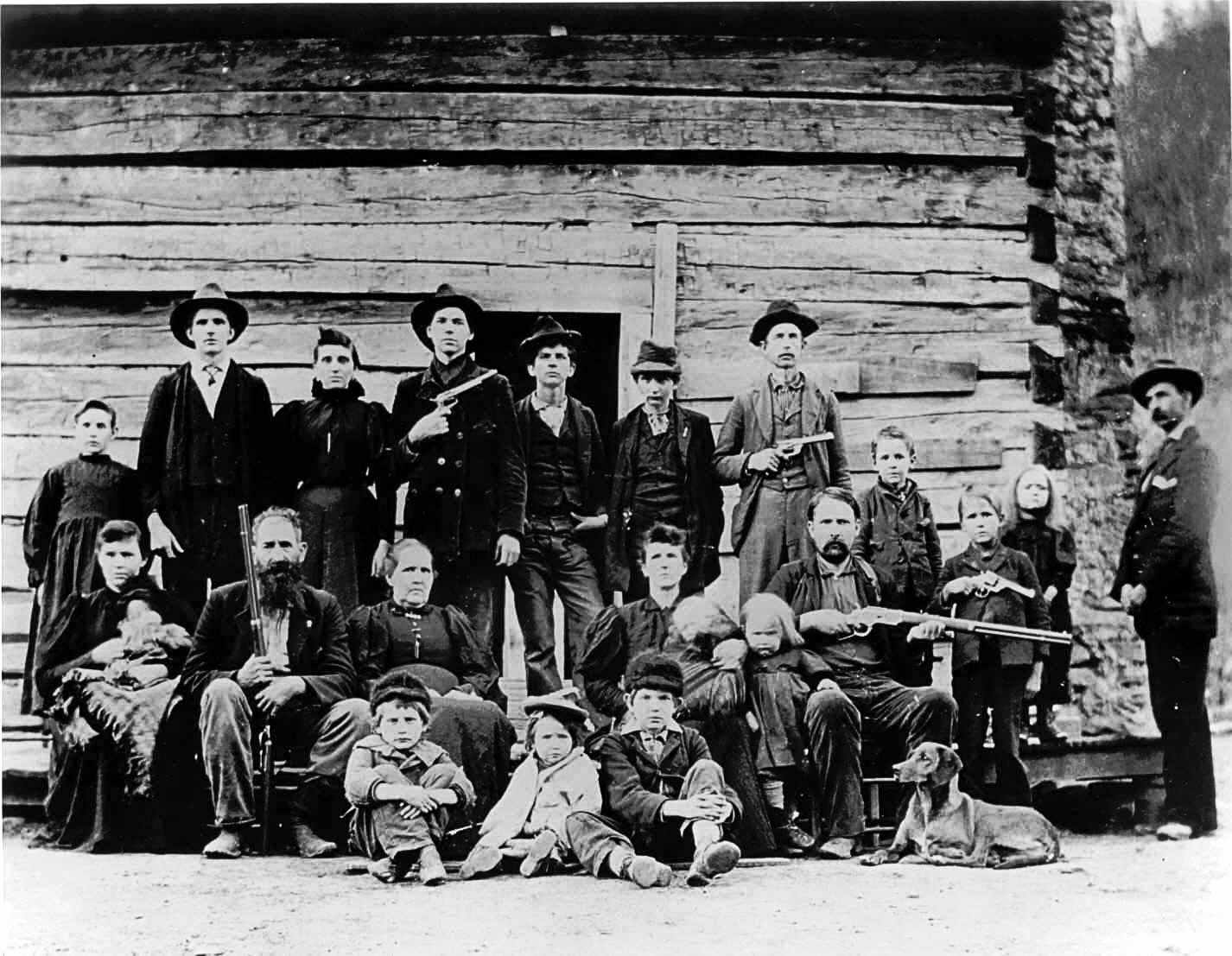|
Honky-tonk
A honky-tonk (also called honkatonk, honkey-tonk, or tonk) is both a bar that provides country music for the entertainment of its patrons and the style of music played in such establishments. It can also refer to the type of piano (tack piano) used to play such music. Bars of this kind are common in the South and Southwest United States. Many eminent country music artists, such as Jimmie Rodgers, Loretta Lynn, Patsy Cline, Ernest Tubb, Johnny Horton, and Merle Haggard, began their careers as amateur musicians in honky-tonks. The origin of the term "honky-tonk" is disputed, originally referring to bawdy variety shows in areas of the old West (Oklahoma, the Indian Territories and mostly Texas) and to the actual theaters showing them. The first music genre to be commonly known as honky-tonk was a style of piano playing related to ragtime but emphasizing rhythm more than melody or harmony; the style evolved in response to an environment in which pianos were often poorly cared ... [...More Info...] [...Related Items...] OR: [Wikipedia] [Google] [Baidu] |
Hank Locklin
Hank Locklin (born Lawrence Hankins Locklin; February 15, 1918 – March 8, 2009) was an American country music singer-songwriter. He had 70 chart singles, including two number one hits on ''Billboard''s country chart. His biggest hits included "Send Me the Pillow You Dream On" and his signature "Please Help Me, I'm Falling". The latter also went to number eight on the ''Billboard'' Hot 100 pop music chart. ''Billboard''s 100th anniversary issue listed it as the second most successful country single of the rock and roll era. It sold over one million copies, and was awarded a gold disc by the RIAA. Locklin was born and raised in Florida. He developed a fondness for country music following an accident in his childhood. He learned to play the guitar during his recovery and began performing locally as well. In his early adulthood, he formed his own band called the Rocky Mountain Playboys, which played gigs and performed on local radio. Locklin was heard singing during one of these ... [...More Info...] [...Related Items...] OR: [Wikipedia] [Google] [Baidu] |
Bar (establishment)
A bar, also known as a saloon, a tavern or tippling house, or sometimes as a pub or club, is a retail business establishment that serves alcoholic beverages, such as beer, wine, liquor, cocktails, and other beverages such as mineral water and soft drinks. Bars often also sell snack foods, such as crisps or peanuts, for consumption on their premises. Some types of bars, such as pubs, may also serve food from a restaurant menu. The term "bar" refers to the countertop where drinks are prepared and served, and by extension to the overall premises. The term derives from the metal or wooden bar (barrier) that is often located along the length of the "bar". Over many years, heights of bars were lowered, and high stools added, and the brass bar remains today. Bars provide stools or chairs that are placed at tables or counters for their patrons. Bars that offer entertainment or live music are often referred to as "music bars", "live venues", or " nightclubs". Types of bars ... [...More Info...] [...Related Items...] OR: [Wikipedia] [Google] [Baidu] |
Country Music
Country (also called country and western) is a genre of popular music that originated in the Southern and Southwestern United States in the early 1920s. It primarily derives from blues, church music such as Southern gospel and spirituals, old-time, and American folk music forms including Appalachian, Cajun, Creole, and the cowboy Western music styles of Hawaiian, New Mexico, Red Dirt, Tejano, and Texas country. Country music often consists of ballads and honky-tonk dance tunes with generally simple form, folk lyrics, and harmonies often accompanied by string instruments such as electric and acoustic guitars, steel guitars (such as pedal steels and dobros), banjos, and fiddles as well as harmonicas. Blues modes have been used extensively throughout its recorded history. The term ''country music'' gained popularity in the 1940s in preference to '' hillbilly music'', with "country music" being used today to describe many styles and subgenres. It came to ... [...More Info...] [...Related Items...] OR: [Wikipedia] [Google] [Baidu] |
Tack Piano
A tack piano (also known as a harpsipiano, jangle piano, and junk piano) is an altered version of an ordinary piano, in which objects such as thumbtacks or nails are placed on the felt-padded hammers of the instrument at the point where the hammers hit the strings, giving the instrument a tinny, more percussive sound. It is used to evoke the feeling of a honky-tonk piano. Tack pianos are commonly associated with ragtime pieces, often appearing in Hollywood Western saloon scenes featuring old upright pianos. The instrument was originally used for classical music performances as a substitute for a harpsichord A harpsichord ( it, clavicembalo; french: clavecin; german: Cembalo; es, clavecín; pt, cravo; nl, klavecimbel; pl, klawesyn) is a musical instrument played by means of a keyboard. This activates a row of levers that turn a trigger mechanism .... Honky-tonk piano A honky-tonk piano has a similar tone as a tack piano, however, the method of obtaining its sound is ... [...More Info...] [...Related Items...] OR: [Wikipedia] [Google] [Baidu] |
Piano
The piano is a stringed keyboard instrument in which the strings are struck by wooden hammers that are coated with a softer material (modern hammers are covered with dense wool felt; some early pianos used leather). It is played using a keyboard, which is a row of keys (small levers) that the performer presses down or strikes with the fingers and thumbs of both hands to cause the hammers to strike the strings. It was invented in Italy by Bartolomeo Cristofori around the year 1700. Description The word "piano" is a shortened form of ''pianoforte'', the Italian term for the early 1700s versions of the instrument, which in turn derives from ''clavicembalo col piano e forte'' (key cimbalom with quiet and loud)Pollens (1995, 238) and ''fortepiano''. The Italian musical terms ''piano'' and ''forte'' indicate "soft" and "loud" respectively, in this context referring to the variations in volume (i.e., loudness) produced in response to a pianist's touch or pressure on the keys: the gr ... [...More Info...] [...Related Items...] OR: [Wikipedia] [Google] [Baidu] |
Hillbilly Music
Hillbilly is a term (often derogatory) for people who dwell in rural, mountainous areas in the United States, primarily in southern Appalachia and the Ozarks. The term was later used to refer to people from other rural and mountainous areas west of the Mississippi river, too, particularly those of the Rocky Mountains and near the Rio Grande. The first known instances of "hillbilly" in print were in ''The Railroad Trainmen's Journal'' (vol. ix, July 1892), an 1899 photograph of men and women in West Virginia labeled "Camp Hillbilly", and a 1900 ''New York Journal'' article containing the definition: "a Hill-Billie is a free and untrammeled white citizen of Alabama, who lives in the hills, has no means to speak of, dresses as he can, talks as he pleases, drinks whiskey when he gets it, and fires off his revolver as the fancy takes him". The stereotype is twofold in that it incorporates both positive and negative traits: "Hillbillies" are often considered independent and self-reli ... [...More Info...] [...Related Items...] OR: [Wikipedia] [Google] [Baidu] |
Rhythm
Rhythm (from Greek , ''rhythmos'', "any regular recurring motion, symmetry") generally means a " movement marked by the regulated succession of strong and weak elements, or of opposite or different conditions". This general meaning of regular recurrence or pattern in time can apply to a wide variety of cyclical natural phenomena having a periodicity or frequency of anything from microseconds to several seconds (as with the riff in a rock music song); to several minutes or hours, or, at the most extreme, even over many years. Rhythm is related to and distinguished from pulse, meter, and beats: In the performance arts, rhythm is the timing of events on a human scale; of musical sounds and silences that occur over time, of the steps of a dance, or the meter of spoken language and poetry. In some performing arts, such as hip hop music, the rhythmic delivery of the lyrics is one of the most important elements of the style. Rhythm may also refer to visual presentation, as "time ... [...More Info...] [...Related Items...] OR: [Wikipedia] [Google] [Baidu] |
Melody
A melody (from Greek μελῳδία, ''melōidía'', "singing, chanting"), also tune, voice or line, is a linear succession of musical tones that the listener perceives as a single entity. In its most literal sense, a melody is a combination of pitch and rhythm, while more figuratively, the term can include other musical elements such as tonal color. It is the foreground to the background accompaniment. A line or part need not be a foreground melody. Melodies often consist of one or more musical phrases or motifs, and are usually repeated throughout a composition in various forms. Melodies may also be described by their melodic motion or the pitches or the intervals between pitches (predominantly conjunct or disjunct or with further restrictions), pitch range, tension and release, continuity and coherence, cadence, and shape. Function and elements Johann Philipp Kirnberger argued: The Norwegian composer Marcus Paus has argued: Given the many and varied e ... [...More Info...] [...Related Items...] OR: [Wikipedia] [Google] [Baidu] |
Harmony
In music, harmony is the process by which individual sounds are joined together or composed into whole units or compositions. Often, the term harmony refers to simultaneously occurring frequencies, pitches ( tones, notes), or chords. However, harmony is generally understood to involve both vertical harmony (chords) and horizontal harmony (melody). Harmony is a perceptual property of music, and, along with melody, one of the building blocks of Western music. Its perception is based on consonance, a concept whose definition has changed various times throughout Western music. In a physiological approach, consonance is a continuous variable. Consonant pitch relationships are described as sounding more pleasant, euphonious, and beautiful than dissonant relationships which sound unpleasant, discordant, or rough. The study of harmony involves chords and their construction and chord progressions and the principles of connection that govern them. Counterpoint, which refers to ... [...More Info...] [...Related Items...] OR: [Wikipedia] [Google] [Baidu] |
Boogie-woogie
Boogie-woogie is a genre of blues music that became popular during the late 1920s, developed in African-American communities since 1870s.Paul, Elliot, ''That Crazy American Music'' (1957), Chapter 10, p. 229. It was eventually extended from piano, to piano duo and trio, guitar, big band, country and western music, and gospel. While standard blues traditionally expresses a variety of emotions, boogie-woogie is mainly associated with dancing (although not the competitive dance known as boogie-woogie, a term of convenience in that sport). The genre had a significant influence on rhythm and blues and rock and roll. Musical features Boogie-woogie is characterized by a regular left-hand bass figure, which is transposed following the chord changes. : : Boogie-woogie is not strictly a solo piano style; it can accompany singers and be featured in orchestras and small combos. It is sometimes called ''"eight to the bar"'', as much of it is written in common time () time using eighth ... [...More Info...] [...Related Items...] OR: [Wikipedia] [Google] [Baidu] |
Tootsies 2015
American rapper Gucci Mane has released fourteen studio albums, two collaborative albums, six compilation albums, one soundtrack, seven extended plays (EPs), 74 mixtapes and 100 singles (including 52 as a featured artist) and 10 promotional singles. His first four albums were released by Big Cat Records, under the aegis of Tommy Boy Records, while his subsequent major projects were released by Atlantic Records Atlantic Recording Corporation (simply known as Atlantic Records) is an American record label founded in October 1947 by Ahmet Ertegun and Herb Abramson. Over its first 20 years of operation, Atlantic earned a reputation as one of the most .... Albums Studio albums Compilation albums Collaborative albums Soundtracks Mixtapes Extended plays Singles As lead artist As featured artist Promotional singles Other charted songs Guest appearances Music videos As lead artist Notes References External links Official websit ... [...More Info...] [...Related Items...] OR: [Wikipedia] [Google] [Baidu] |
Golden Age
The term Golden Age comes from Greek mythology, particularly the '' Works and Days'' of Hesiod, and is part of the description of temporal decline of the state of peoples through five Ages, Gold being the first and the one during which the Golden Race of humanity ( ''chrýseon génos'') lived. After the end of the first age was the Silver, then the Bronze, after this the Heroic age, with the fifth and current age being Iron. By extension, "Golden Age" denotes a period of primordial peace, harmony, stability, and prosperity. During this age, peace and harmony prevailed in that people did not have to work to feed themselves for the earth provided food in abundance. They lived to a very old age with a youthful appearance, eventually dying peacefully, with spirits living on as "guardians". Plato in '' Cratylus'' (397 e) recounts the golden race of humans who came first. He clarifies that Hesiod did not mean literally made of gold, but good and noble. In classical Greek myt ... [...More Info...] [...Related Items...] OR: [Wikipedia] [Google] [Baidu] |









.jpg)